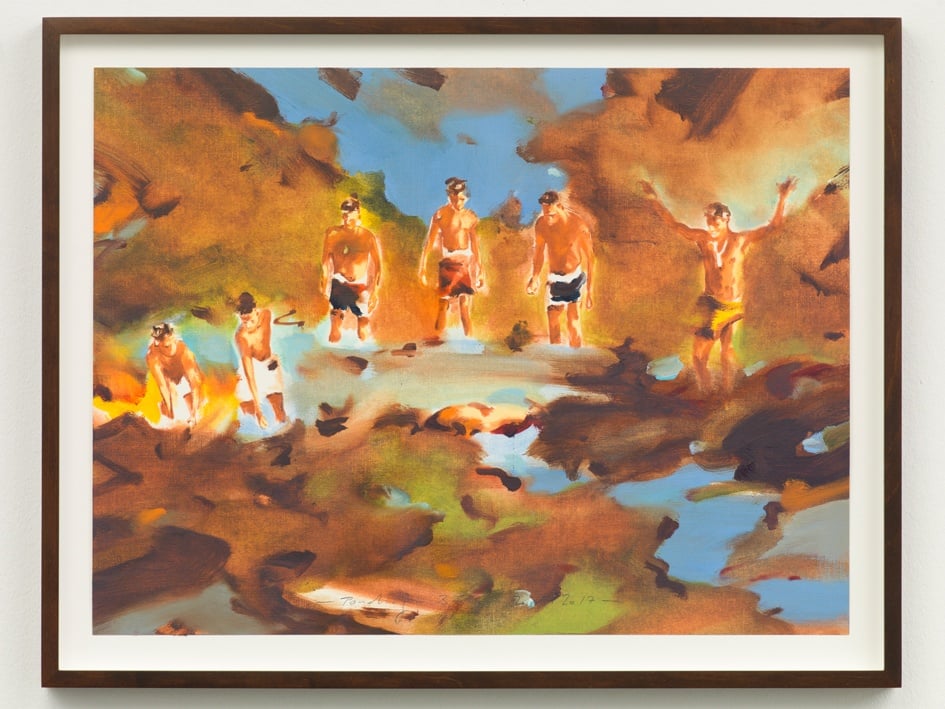Art World
Want to See Norbert Bisky’s New Paintings? You’ll Have to Get Into Berlin’s Notorious Berghain Nightclub First
Photos are not allowed inside the club so you'll have to get past the infamously tough doormen to see it.
Photos are not allowed inside the club so you'll have to get past the infamously tough doormen to see it.
Henri Neuendorf

The only way to experience Norbert Bisky’s latest commission is in situ inside Berlin’s legendary nightclub Berghain—the techno temple’s strict no-photo policy means that there will be no images of Bisky’s permanent installation.
But to get to Bisky’s artwork, you’d have to first make it past the club’s infamously tough doormen.
Now located in an abandoned power plant, the club—which first opened at a nearby location under the name Ostgut—gained notoriety in the city’s hedonistic underground nightlife scene of the 1990s.

Norbert Bisky Permaculture I. Photo: courtesy of the artist and Galerie König.
There are artworks installed across all of the club’s three levels, by artists including Wolfgang Tillmans and Joseph Marr. Bisky’s new work, titled Vertigo (2017), will adorn the club’s recently opened, ground-level dancefloor, dubbed Säule, which is dedicated to more experimental and conceptual genres of electronic music. It replaces Piotr Nathan’s huge mural Rituals of Disappearance which was taken apart and sold in individual parts earlier this year.
König Galerie, who recently added Bisky to its stable, is hosting an exclusive, invitation-only event for the unveiling of the mysterious installation tonight, on the occasion of Berlin Gallery Weekend. On the invites, guests are reminded that “Taking photographs is prohibited at Berghain,” and are asked “to respect the club’s policy.”
The new representation of Bisky—and his project at one of the world’s most well-known Techno clubs—takes König’s gallery into a fresh new direction, adding a layer of diversity to a program thick with conceptual artists and sculptors.

Norbert Bisky Ponding (2017). Photo: courtesy of the artist and Galerie König.
Bisky emerged as part of the Leipziger Schule, a movement of painters from the east German city’s art academy in the early 2000s. His colorful and playful figurative works—often featuring queer or homoerotic themes—propelled him to the forefront of a new generation of young German painters who gained significant market recognition.
His market took a dip in recent years; whether the switch to a new gallery would revive interest in his work remains to be seen. The artist already enjoys a good working relationship with Johann König’s half brother, Leo König, of New York’s Koenig & Clinton.